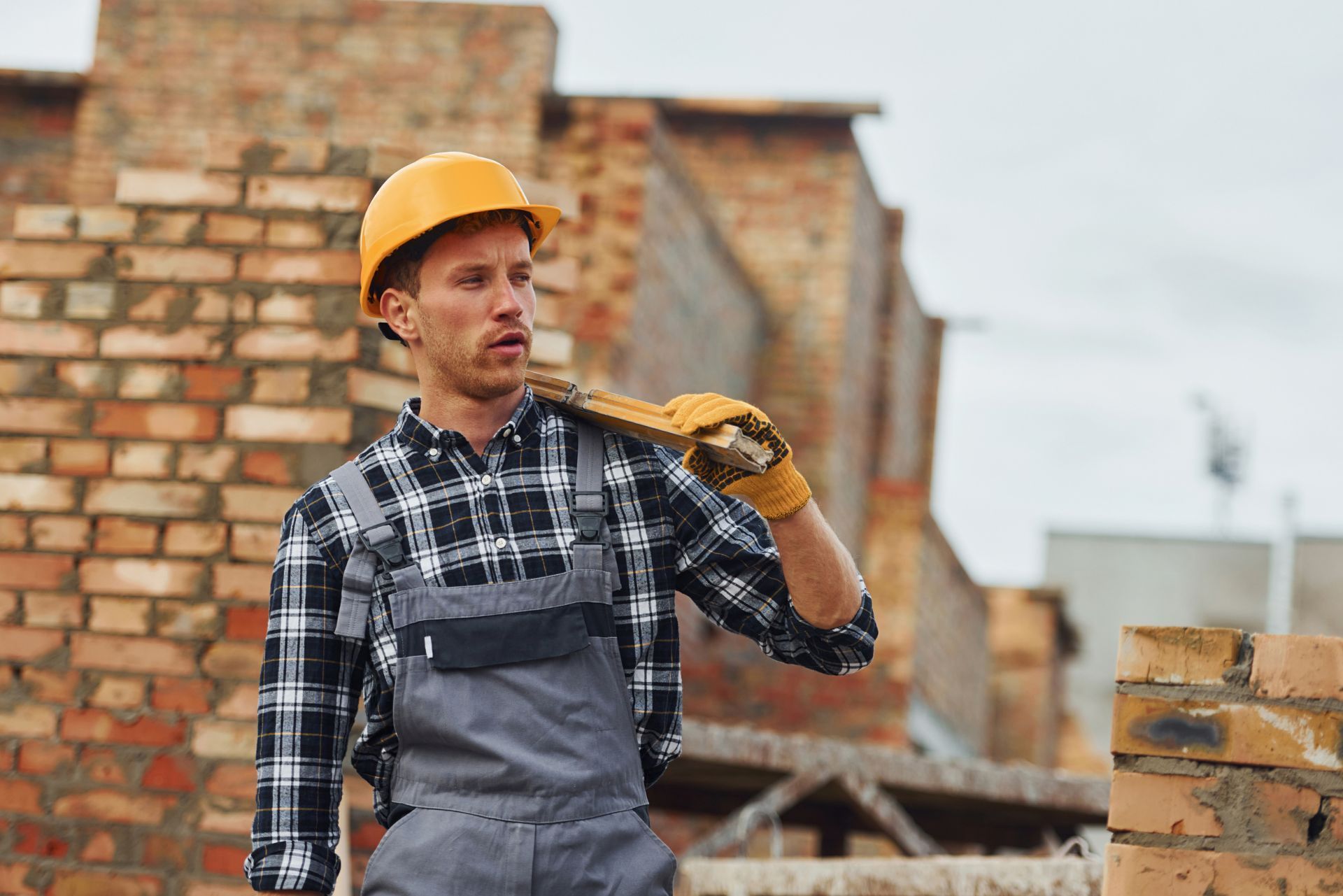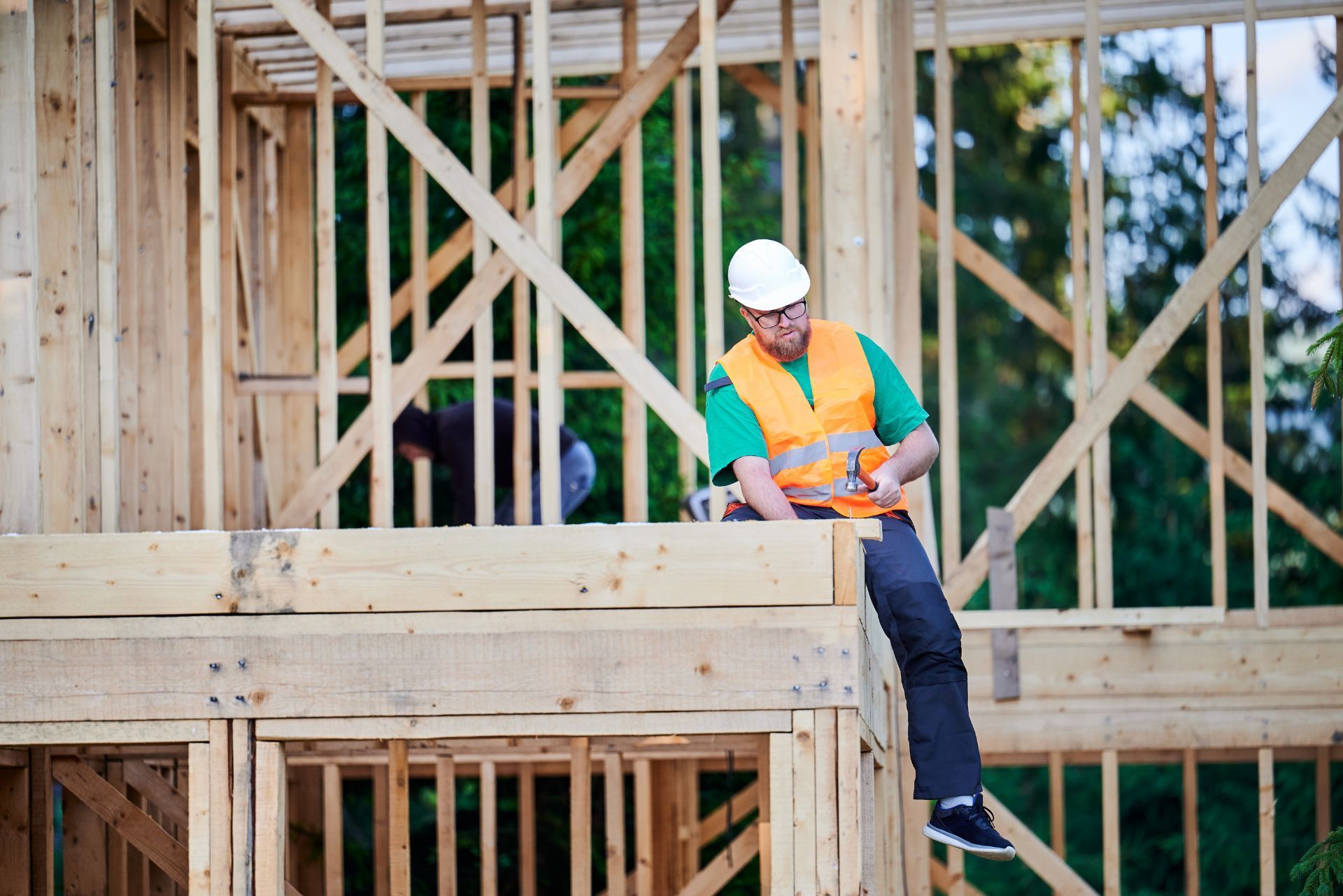Illinois Builder's Risk Insurance

See How We're Different:
or call us: (619) 734-7477
Top 3 Recommended Policies
Index
Contact Us
Phone
Location
Building projects are inherently risky endeavors, and ensuring that your investment is protected is crucial. In Illinois, builder's risk insurance serves as a safety net for contractors, homeowners, and developers alike. This comprehensive guide aims to demystify builder's risk insurance, explaining its importance, coverage options, and how to choose the right policy for your project.
What is Builder's Risk Insurance?
Builder's risk insurance, also known as course of construction insurance, is a specialized type of property insurance designed to cover buildings under construction. It protects against various risks that can occur during the building process, such as fire, theft, vandalism, and certain weather-related damages.
This type of insurance is typically purchased by the property owner or the general contractor and covers the structure itself, materials, and sometimes even labor costs. Understanding the nuances of builder's risk insurance is essential for anyone involved in construction projects in Illinois. The importance of this insurance cannot be overstated, as it not only safeguards the financial investment but also ensures compliance with local regulations and lender requirements, which often mandate such coverage before a project can commence.
Key Features of Builder's Risk Insurance
Builder's risk insurance policies typically include several key features that make them unique compared to standard property insurance. These features often encompass coverage for materials on-site, temporary structures, and equipment used in the construction process. For instance, if materials are damaged during transport to the site or while stored on-site, builder's risk insurance can help cover the costs of replacement, ensuring that projects stay on track.
Additionally, policies can be tailored to meet the specific needs of a project, allowing for flexibility in coverage limits and types of risks covered. This customization is vital, as different projects may face varying levels of risk based on location, type of construction, and other factors. For example, a project located in an area prone to severe storms may require additional coverage for wind and flood damage, while urban projects might need enhanced theft protection due to higher crime rates. Understanding these features helps stakeholders make informed decisions about the level of coverage necessary for their specific projects.
Who Needs Builder's Risk Insurance?
Builder's risk insurance is essential for various stakeholders in the construction industry. This includes property owners, general contractors, subcontractors, and even lenders who may require coverage before financing a project. Each party has a vested interest in ensuring that the construction process is protected from unforeseen events that could lead to financial losses. For example, a contractor facing a significant loss due to theft of materials might find their project delayed, leading to increased costs and potential penalties.
Moreover, even if a project is small, having builder's risk insurance can provide peace of mind, knowing that potential risks are mitigated. It's a crucial investment for anyone involved in the construction process, regardless of the project's scale. Additionally, many insurance providers offer risk management resources and advice as part of their builder's risk insurance packages, helping stakeholders identify potential hazards and implement strategies to minimize risks. This proactive approach not only enhances safety on-site but also fosters a culture of accountability and diligence among all parties involved in the construction process.
Types of Coverage Offered
Builder's risk insurance can vary significantly in terms of coverage, depending on the specific policy and provider. Understanding the different types of coverage available is essential for selecting the right policy for your needs.
Property Coverage
The primary feature of builder's risk insurance is property coverage, which protects the physical structure being built. This includes coverage for the building's materials, fixtures, and equipment on-site. Property coverage typically extends to damages caused by fire, vandalism, theft, and certain natural disasters.
It's important to note that while builder's risk insurance covers many risks, it may not cover everything. For instance, damages due to poor workmanship or design flaws are generally not included. Therefore, understanding the specific exclusions in a policy is crucial for comprehensive risk management. Additionally, some policies may also provide coverage for temporary structures, such as scaffolding or construction trailers, which can be vital for larger projects where such facilities are necessary for operations.
Liability Coverage
While builder's risk insurance primarily focuses on property coverage, some policies may offer liability coverage as an add-on. This type of coverage protects against third-party claims for bodily injury or property damage that may occur during the construction process.
Liability coverage is particularly important for contractors and subcontractors, as it helps shield them from potential lawsuits arising from accidents on the job site. However, it’s essential to review the specifics of liability coverage, as limits and conditions can vary widely between policies. Furthermore, certain policies may also include coverage for completed operations, which protects against claims that arise after the construction is finished, providing an additional layer of security for contractors worried about long-term liabilities.
Additional Coverage Options
In addition to standard property and liability coverage, many builder's risk insurance policies offer additional options that can enhance protection. These may include coverage for equipment breakdown, soft costs, and loss of income due to project delays.
Soft costs refer to expenses that may arise from delays, such as legal fees, permits, and financing costs. Including these in a builder's risk policy can provide a more comprehensive safety net for project stakeholders. It’s advisable to discuss these options with an insurance agent to ensure that all potential risks are covered. Moreover, some policies may also offer coverage for environmental risks, such as pollution liability, which can be particularly relevant for construction projects that involve land development or renovation of older buildings that may contain hazardous materials. This added layer of coverage can help mitigate the financial impact of unforeseen environmental issues that could arise during or after construction.

Factors Influencing Builder's Risk Insurance Costs
The cost of builder's risk insurance can vary significantly based on several factors. Understanding these elements can help project owners and contractors budget effectively for their insurance needs.
Project Size and Scope
One of the most significant factors influencing the cost of builder's risk insurance is the size and scope of the construction project. Larger projects with higher construction costs typically result in higher premiums due to the increased risk and potential for significant losses.
Additionally, the complexity of the project can also affect costs. Projects that involve unique architectural features or specialized construction techniques may carry higher premiums due to the increased risk of accidents or damage. For instance, a high-rise building with intricate designs may require specialized materials and skilled labor, which can elevate the likelihood of mishaps during construction. This complexity necessitates a thorough risk assessment by insurers, who may adjust premiums accordingly to account for these additional risks.
Location and Environmental Risks
The location of the construction site plays a crucial role in determining insurance costs. Areas prone to natural disasters, such as floods, earthquakes, or hurricanes, may lead to higher premiums due to the increased risk of damage.
Furthermore, urban areas with higher crime rates may also see increased costs due to the risk of theft and vandalism. Insurers often assess these environmental risks when calculating premiums, making it essential to consider location when budgeting for builder's risk insurance. For example, a construction site situated in a coastal region may not only face the threat of hurricanes but also the corrosive effects of saltwater, which can impact building materials. As a result, builders in such locations might need to invest in additional protective measures, further influencing their insurance costs.
Coverage Limits and Deductibles
The coverage limits chosen for a builder's risk policy can significantly impact the overall cost. Higher coverage limits generally lead to higher premiums, while lower limits may save money but expose the project to greater financial risk.
Similarly, the deductible amount selected can also influence costs. A higher deductible typically results in lower premiums, but it also means that the policyholder will bear more financial responsibility in the event of a claim. Balancing coverage limits and deductibles is crucial for effective risk management. Moreover, project owners should also consider the potential for unforeseen events that could lead to costly repairs or delays. For example, if a project is delayed due to weather conditions or supply chain issues, the financial implications can be substantial. Therefore, opting for a policy that adequately covers such contingencies, even if it comes at a higher premium, may ultimately save money in the long run by mitigating the risks associated with project delays and unexpected expenses.
How to Choose the Right Builder's Risk Insurance Policy
Choosing the right builder's risk insurance policy requires careful consideration of various factors. Here are some essential steps to guide the decision-making process.
Assess Your Project's Needs
The first step in selecting a builder's risk insurance policy is to assess the specific needs of the construction project. This includes evaluating the project size, scope, and potential risks associated with the location and construction type.
Understanding the unique aspects of the project will help in determining the necessary coverage limits and types of coverage required. Consulting with a knowledgeable insurance agent can provide valuable insights into the best options available. Furthermore, it’s important to consider any unique features of the construction, such as the use of specialized materials or innovative building techniques, which may necessitate additional coverage. For instance, if the project involves high-value items or custom installations, ensuring that these elements are adequately covered can protect against significant financial loss.
Compare Multiple Quotes
Obtaining quotes from multiple insurance providers is a crucial step in finding the best builder's risk insurance policy. Each insurer may offer different coverage options, limits, and premiums, making it essential to compare these factors carefully.
When comparing quotes, it’s important to look beyond just the price. Consider the reputation of the insurance provider, customer service, and the specific terms and conditions of each policy. A lower premium may not be worth it if the coverage is inadequate or the insurer has a poor claims handling reputation. Additionally, it can be beneficial to ask for recommendations from other contractors or builders who have had experience with various insurers. Their firsthand accounts can shed light on the reliability of the coverage and the responsiveness of the insurer during the claims process, which is invaluable when making your decision.
Read the Fine Print
Before finalizing a builder's risk insurance policy, it’s vital to read the fine print. This includes understanding the exclusions, limitations, and conditions of the policy. Knowing what is and isn’t covered can prevent unpleasant surprises when filing a claim.
Additionally, reviewing the claims process outlined in the policy can provide insights into how the insurer handles claims and what documentation may be required. Ensuring clarity on these aspects can lead to a smoother experience should a claim need to be filed. It’s also wise to inquire about any additional endorsements or riders that could enhance your coverage. For example, some policies may offer optional coverage for natural disasters or vandalism, which could be particularly relevant depending on the project’s location. By being proactive and thoroughly understanding the policy details, you can secure a plan that truly meets the needs of your construction project.
Common Exclusions in Builder's Risk Insurance
While builder's risk insurance provides extensive coverage, it’s essential to be aware of common exclusions that may apply. Understanding these exclusions can help project stakeholders manage their risks more effectively.
Wear and Tear
Builder's risk insurance typically does not cover damages resulting from normal wear and tear. This includes issues such as rust, corrosion, and deterioration that occur over time. It’s crucial for project managers to maintain the construction site and address any maintenance issues promptly to avoid potential losses.
Faulty Workmanship
Another common exclusion is damages resulting from faulty workmanship or design flaws. If a structure is damaged due to poor construction practices or materials, builder's risk insurance may not cover the losses. This highlights the importance of hiring qualified professionals and ensuring quality control throughout the construction process.
Intentional Acts
Damages caused by intentional acts, such as vandalism by the contractor or employees, are typically excluded from builder's risk policies. It’s essential for project stakeholders to foster a positive work environment and implement security measures to mitigate the risk of intentional damage.

Filing a Claim: What to Expect
In the unfortunate event of a loss, understanding the claims process is crucial for ensuring a smooth experience. Here’s what to expect when filing a claim under a builder's risk insurance policy.
Notify Your Insurer Promptly
As soon as a loss occurs, it’s essential to notify the insurance provider promptly. Most policies have specific timeframes within which claims must be reported, and failing to do so can result in denial of the claim.
When notifying the insurer, be prepared to provide detailed information about the incident, including the date, time, and nature of the loss. Documentation, such as photographs and witness statements, can also be helpful in supporting the claim.
Documentation and Investigation
After a claim is filed, the insurance company will typically conduct an investigation to assess the validity of the claim. This may involve reviewing documentation, inspecting the site, and interviewing involved parties.
Providing thorough and accurate documentation can expedite the claims process and increase the likelihood of a favorable outcome. It’s essential to keep records of all communications with the insurer throughout this process.
Claim Resolution
Once the investigation is complete, the insurer will determine whether the claim is valid and the amount to be paid. If the claim is approved, the insurer will issue a payment based on the policy terms and conditions.
In some cases, disputes may arise regarding the claim amount or validity. If this occurs, it may be necessary to engage in negotiations with the insurer or seek legal counsel to resolve the issue. Understanding the claims process and being prepared can help mitigate stress during this challenging time.
Conclusion
Builder's risk insurance is a vital component of any construction project in Illinois, providing essential protection against various risks. By understanding the intricacies of this insurance type, stakeholders can make informed decisions that safeguard their investments.
From assessing project needs to navigating the claims process, being proactive in managing risks can lead to a more successful construction experience. Whether you are a homeowner, contractor, or developer, investing in builder's risk insurance is a step toward ensuring the security and success of your construction endeavors.
For those involved in construction projects, consulting with an experienced insurance agent can provide valuable guidance in selecting the right policy and navigating the complexities of builder's risk insurance. With the right coverage in place, peace of mind can be achieved, allowing all parties to focus on what truly matters: completing the project successfully.
